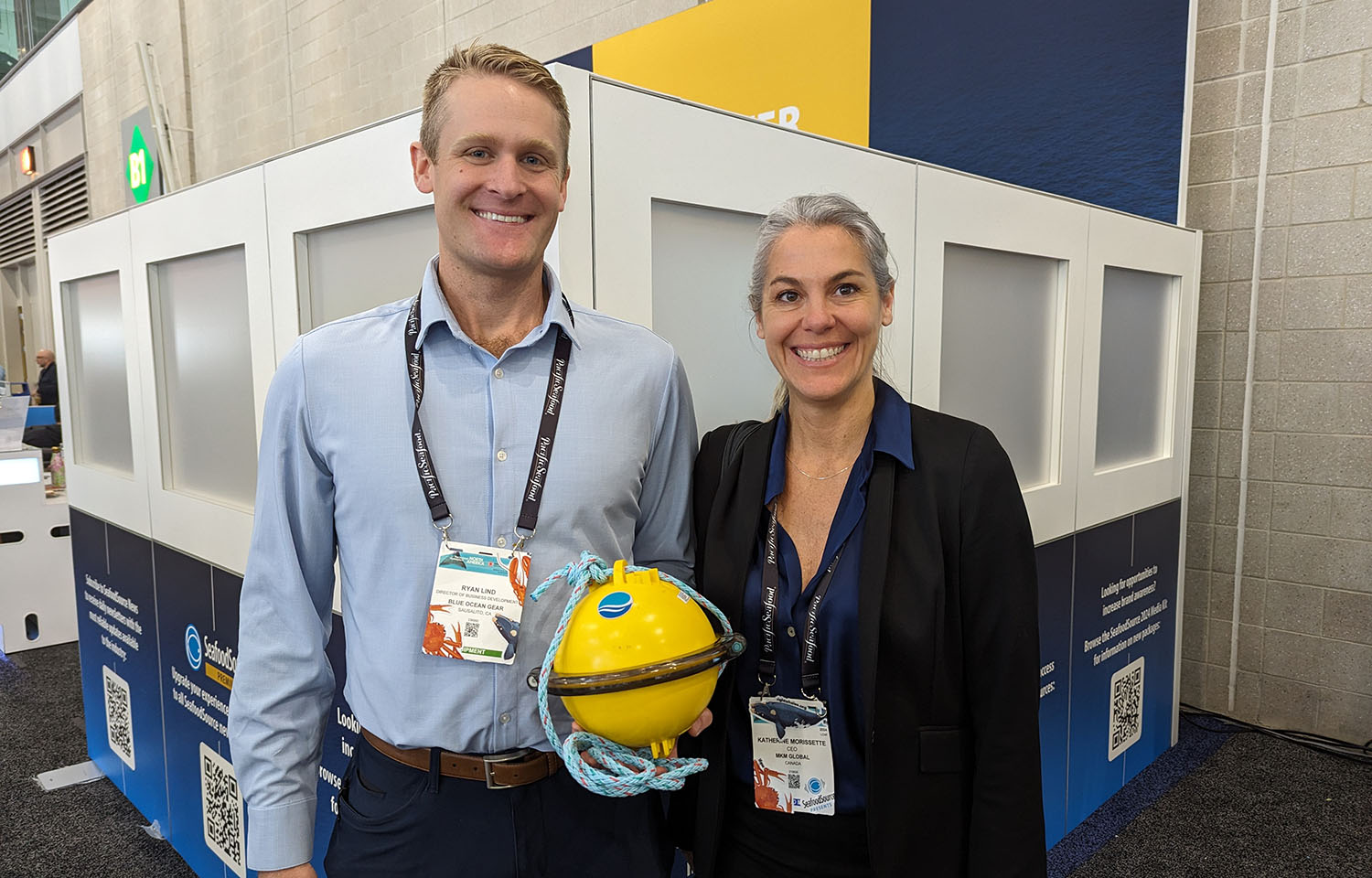The Gulf of St. Lawrence Allied Fisheries (GOSAF) is piloting multiple new technologies through a fishery improvement project (FIP) that are all designed to minimize potentially harmful interactions between critically endangered North Atlantic right whales and snow crab traps.
The FIP's launch in June 2021 coincided with the fishery deciding to withdraw its efforts to regain Marine Stewardship Council certification. The fishery lost the certification in 2018 after entanglement incidents with North Atlantic right whales in 2017 were linked to snow crab gear.
Since that time, the fishery has been pioneering new gear types to avoid conflict with whales, including weak links in rope and “ropeless” on-demand gear. FIP Coordinator Katherine Morissette told SeafoodSource during the 2024 Seafood Expo North America the fishery has worked to be proactive and adapt quickly.
“They really moved rapidly and started to use the ropeless [gear] as quick as in 2018,” she said. “Just a year after, everybody made moves; the government moved with measures, and the fishermen moved with trying new technology.”
The latest technology the fishery is piloting is Blue Ocean Gear’s “Smart Buoy.”
Blue Ocean Gear Sales Manager Ryan Lind told SeafoodSource the idea behind the smart buoy is relatively simple in execution but effective in practice: Attach the smart buoy to existing crab pot vertical lines, and it tells fishermen exactly where those lines are in real-time.
“Fishermen like it because it doesn’t change the way they fish,” Lind said. “You can attach it to any gear type, and it doesn’t add stress; it reduces stress and tells them what’s happening at any time.”
The buoy sends a signal trackable on a smartphone app and lets fishermen know exactly where their buoys are, giving alerts if anything about the buoy changes in an unusual way. For example, if a buoy is submerged below the water for a period of time or begins moving around in an unusual way, it will alert fishermen, as those events can be signs of entanglement or other issues. And it helps fishermen keep track of their gear and make sure it’s no longer out on the water.
“It just so happens in the Gulf of St. Lawrence, whale entanglements are not happening during the season. They’re happening after the season when all the gear should be back in,” Lind said. “The gear that gets left out because it’s lost poses the concern.”
Canada’s Department of Fisheries and Oceans frequently closes areas of the Gulf of St. Lawrence crab fishery during the season through the use of 15-day dynamic closures instituted when a whale is detected in the area. Those closures often happen on short notice, giving fishermen a short amount of time to remove all their traps. That's a task the smart buoy can help with, according to Morissette.
Morissette said that as part of GOSAF’s pilot of the new technology, the Elsipogtog First Nation has totally geared one of its two crab vessels with the smart buoy across its 150 snow crab traps.
“It’s the second boat that’s equipped with this,” she said.
The new buoys, Lind and Morissette said, present a solution that fishermen can use quickly without needing to re-learn how to fish.
It is also much more cost-effective compared to on-demand traps. A smart buoy costs USD 1,400 (EUR 1,300) on Blue Ocean’s website, whereas a single on-demand trap can be up to USD 6,000 (EUR 5,562). Across 150 traps, a fisherman is faced with a cost of just over USD 217,500 (EUR 201,600) compared to USD 900,000 (EUR 834,300) or more for a full set of on-demand gear.
So far, the boats piloting the gear have been successful using it without incident, Lind said. One fisherman discovered he had left a trap out at sea after pulling in all his traps for the season, which he wouldn’t have realized without the smart buoy. In 2023, 500,000 pounds of snow crab were caught with the gear, he said.
The smart buoy may not be the only solution needed for the fishery, Lind said, but it can be an easy way to reduce impacts as technology like on-demand gear continues to be developed.
“There are other things that could potentially reduce risks to whales,” Lind said. “But, we do know with a great deal of certainty that having a smart buoy reduces ghost gear and the risk of entanglements after the season is over.”








